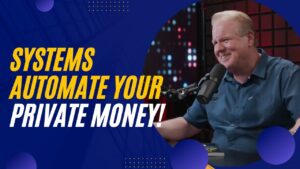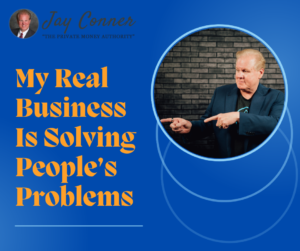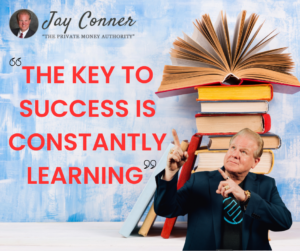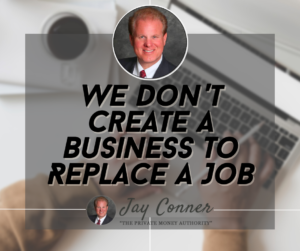Meet Staci Gray, a seasoned business organizer with over two decades of experience scaling real-world businesses. She is passionate about collapsing the gap between ideas and profits by consistently executing for progress and results.
Through strategic planning and success coaching accountability, Staci helps syndicators who raise private money to efficiently and effectively solve problems, impact people on a human level, and generate profits quickly without being bogged down by operational chaos.
Tune in to this episode of Raising Private Money as Staci shares her expertise on scaling businesses, navigating operational challenges, and achieving success with purpose.
Key Takeaways:
- Syndication businesses and private money
- Problems in syndication businesses that Staci’s team solves
- Successful people and their trait of constantly learning and adapting
- The biggest mistake that business owners can make
- The synergy between visionary and integrator
- Finding your perfect integrator
- Staci’s ideal client
Connect with Staci:
Website: https://www.OrganizeToScale.com
Email: scale@organizetoscale.com
Check out my book: 7 Reasons Why Private Money Will Skyrocket Your Real Estate Business and Help You Build Incredible Wealth!
Get it here for FREE: www.jayconner.com/moneyguide
Sign up for the Private Money Academy and get 4-weeks free: https://jay-conner.mykajabi.com/offers/AMM4hCPW/checkout
Timestamps:
0:01 – Raising Private Money with Jay Conner
0:02 – Today’s Guest: Staci Gray
1:48 – Syndication Business & Private Money
6:53 – Successful People Are Continuously Learning
9:41 – Biggest Mistake Business Owners Make
12:26 – Do You Feel Like Your Business Is Running You?
16:45 – The Visionary and The Integrator
20:40 – Are You Fit For https://www.OrganizeToScale.com
22:17 – How To Find Your “Perfect” Integrator
24:42 – Connect With Staci Gray: scale@organizetoscale.com
26:39 – Jay’s Free Money Guide: https://www.JayConner.com/MoneyGuide
Profitable Systems & Private Money With Staci Gray
[00:00:00] Jay Conner:
My guest today on raising private money helps real estate syndicators who raise private money by helping them build businesses they can own without their businesses owning them. You hear me say it all the time you run it. Don’t let it run you right. Through strategic planning and success coaching accountability, my guest helps syn indicators in quickly executing and taking action.
To achieve profits and peace of mind without sacrificing relationships and getting caught up in all the organized chaos. She envisions a world where innovative leaders and entrepreneurs are empowered to efficiently and effectively grow and scale their businesses. Fuel the economy and impact others on a human level, all while generating profits super, super fast.
She knows and understands how a lack of execution can lead to a gap between ideas and making profits. In just a moment, you’re going to meet my guest, Staci Gray, right after this. If
[00:01:09] Narrator:
If you are a real estate investor and are wondering how to raise and leverage private money to make more profit on every deal then you are in the right place on raising private money, we’ll speak with new end seasoned investors to dissect their deals and extract the best tips and strategies to help you get the money because the money comes first.
Now, here’s your host, Jay Conner.
[00:01:48] Jay Conner:
Staci, it’s great to have you as a guest on raising private money today. And as I said in the intro, you and your team work strictly with syndicators people, and businesses who are raising private money for their real estate deals. And walk us through that process. How is it that you and your team work with syndicators?
That is raising private money. And before you answer the question, just to make sure our audience and everyone knows what we’re talking about, syndicators most of the time are people that are raising private money for commercial deals. Whereas in my world of private money, we focus on what we call one-offs raising private money for single-family houses, but at least everybody now understands what we mean by this thing called syndication.
So how is it that you and your team do work with ’em? Staci?
[00:02:40] Staci Gray:
That’s a great question. I’m happy to be here too. Thank you for having me. So we work with syn indicators in a three-step process. So step one is an architect. A lot of people when they go out to start their syndication businesses, they’re deal junkies and they’re really excited about chasing the deals, whether it be real estate deals or even energy deals.
Anything that they can make money at, and they don’t realize that maybe there’s a business component to what they’re working on achieving with their deals. And so we break that down for them to simplify it so they can actually turn their ideas into executable plans. And we do that with a three-step process.
And step one is an architect. That’s where we create the business blueprint. This is how you run your business, and then it gets passed to the build team. And the build team is like a general contractor who takes the blueprint and then builds the essential infrastructure that is needed in order to, in step three, plug in a property manager tenant or day-to-day execution team who follows the standard operating procedures and executes.
The day-to-day items that are needed to help you achieve your goals. And so we break down a syndication business into those three buckets, and they’re primarily bucketed into seven. Core functions. And those are how you build your brand and network, which I know that you talk a lot about, is how you get out there in the marketplace and use that education component.
And then the next one is, how do you prepare and present your offerings? How do you acquire onboard investors? How do you communicate with active investors? How do you acquire and manage deals? How do you build and lead a team? And how do you do financial management and rep? Reporting and when you have that all mapped out in kind of a workflow and assembly line, then you can plug in the resources and tools that you need to execute consistently and not get trapped in the day-to-day.
[00:04:43] Jay Conner:
Staci, my guess is since you’ve put this system together of the Business blueprint general contractor, and property manager, this process of doing business, my guess is. You’ve probably noticed over the past years that syndicators had a problem and they had struggles and they needed some solutions to some problems.
After all, we wouldn’t be in business unless we were providing solutions to people’s problems. But what common struggles, what problems, what challenges did you see that trended among syndicators that you were able to come along with and bring these solutions?
[00:05:26] Staci Gray:
That’s a great question. So there are a lot of common things that are trending with syndicators and just visionary entrepreneurs in general that really hinder the scalability and growth of a company.
One of the things that we like to say is that you can only scale your business to the extent that you scale yourself. So there is an element of psychology and leadership. That is critical. You could have all the right systems, all the right resources, all the right team in the world, but if the leader is not dialed into what their vision is, what their values are, and the direction that they’re going, and really rallying everyone in that direction, it’s really challenging to build and scale.
So that’s one huge component that transcends. Business industry or vertical, but it’s very just innate to human nature. So leadership and developing those qualities. And then tactically, one of the things that a lot of syndicators maybe miss out on is seeing that there is the business side of it.
They’re really excited about performers and doing the math on a deal and not necessarily focusing on the hub of their business that will actually be. Be like a shared service, a shared resource that you can leverage across all of your deals. When you do that, you have economies of scale, you can streamline things.
There are more efficiencies and that allows you to scale faster.
[00:06:52] Jay Conner:
Makes a lot of sense. One thing that you just said really resonates with me, and that is the personal growth component, one thing that I’ve noticed. Successful individuals overall are the most successful that really achieve their goals is that they’re constantly learning.
In addition to that, they are avid readers reading all the time. And I’ve, I assume that you have noticed the same thing, right?
[00:07:23] Staci Gray:
Yes, I was just writing a piece of content earlier today and I was saying how some of, the best mentors that I’ve had in my life don’t even know I exist. I have read all of their B books, and I’ve listened to all of their podcasts.
It’s virtually free for us to consume that. And it’s so transformational because what you think affects what you do and what you do affects the results you get and the way to change how you think is to change who you hang around and put new good insights into your brain.
[00:07:53] Jay Conner:
It sounds like you’re an avid reader yourself.
Who are the who are some of the thought leaders that you’ve read after that’s really made an impact on you?
[00:08:06] Staci Gray:
Yeah, so there are actually five, or six books that I’ve read that really impacted me. My, me as a leader, as a manager, as a business architect, and as a systems person, one of which is the speed of trust by Stephen Covey, how you trust people on two things.
You trust them on their character, and you trust them on their competency. And that’s really a culture book. But I do think that leaders create culture, and culture drives behaviors. And if we’re not happy with the behaviors that are happening within our organizations or within ourselves, then we don’t ha.
Have the right culture. So the speed of trust by Stephen Covey has been phenomenal. The second book is EIF by Mark Michael Gerber, which is all about systems. A branding book that I love is Building a Story Brand by Donald Miller. And then as far as just Execution goes traction, the entrepreneurial operating system is amazing.
There is a great book for cash management for business owners called Profit First by Mike Mcz, which has been great. Everything by Patrick Len John Maxwell, Jim Ron, Brian, Tracy. They’re all phenomenal as well. There are so many great books, but the ones that have really been critical to the business structure have been those, and then also measure what matters by I’m not sure who it’s by, but OKRs, objectives, and key results.
[00:09:31] Jay Conner:
Your favorites are a lot of the same for me. I love John Maxwell, Stephen Covey, and all that. As we were just talking about the common struggles that you’ve noticed and the solutions that you bring to syn indicators who are looking to scale their business, if you could only name one, the biggest mistake overall that business owners make.
I know what mine is or was. What would you say? What would you say it is?
[00:10:03] Staci Gray:
Yeah. I think the visit biggest mistake business owners make is overlooking the impact of culture on executing results.
[00:10:13] Jay Conner: So unpack that for us and what does that mean about the culture and et cetera? What’s that mean?
[00:10:22] Staci Gray:
Yeah, so people say time is the most valuable resource, and to an extent that is true. However, I think time. The energy you bring to your time is the most valuable resource. So if as a leader you can create an environment that aggregates the most energy, positive energy from people around you, and have it laser-focused on the things that they are uniquely qualified to do and that they feel compelled to do.
Then you are going to get such innovation and creativity and enthusiasm and excitement and productivity out of those people, and they will then become massive problem solvers. And at the start of this call, we talked about how you can’t be an entrepreneur unless you’re solving a problem, and culture, a great culture rallies people together to solve problems faster.
And the faster you do that as an entrepreneur, the faster you generate. Or the faster you execute faster, you generate revenue, generate results, improve profitability, and so culture is the linchpin or the first domino that if you knock it over, it can knock over so many other things as well.
[00:11:36] Jay Conner:
That makes a lot of sense.
And along those lines, I say all the time that we’re entrepreneurs, we’re visionaries, we have a business. And when creating a business, if you have a day job, you don’t wanna create a business just to replace another job. What I focus on and what I coach my clients on is focusing on doing what they love to do.
And you just touched on this, focus on what you love doing, what you’re passionate about, what you’re really good at, and get out of the way of the other 90% of the stuff. Because actually there are other people that can do that a whole lot better than you can do it and just focus on what you enjoy doing and identifying what that is.
But there’s a challenge, Staci, for me that comes along with that, and that is, I enjoy what I do so much. I don’t even view this as work. I don’t even view what I do with the majority of my time as work, even though it is because I love it so much. And the challenge that comes along with that. Is that when you love what you’re doing so much, you end up not having a very well-rounded life?
Like you just I don’t know if you’ve been accused of being a workaholic. I say I’m not a workaholic. I’m a funaholic. I’m having fun all the time. It just happens to be here at this desk or wherever it is that I’m traveling. So how do you build your business?
To where it just doesn’t totally gobble you up, consume you, and you know you’re not doing other stuff.
[00:13:25] Staci Gray:
You just dissected something that we have thought about for so long and have built systems around and so I have a unique background. I wa if like the visionary integrator dynamic, C E O C O dynamic, for most of my business building career, I have been more of the c o o.
So I executed the vi somebody else’s vision through systems. Then I score very high being a visionary and an integrator. But I recently transitioned out of being an integrator into the visionary role, and that it, that opened my eyes up to this very thing that you’re talking about. So when we organize businesses, the first thing we do with a visionary is identified what we call their sweet spot.
And then we do everything that we can to keep them in their sweet spot. And if anyone has read Cashflow Quadrant by Robert Kiyosaki, he talks about the e n s side, the employee, and the self-employed. Being working the hardest and trading the most time for dollars with the least amount of time freedom.
And then the business owner and investor side have more of the passive income, cash flow, and time freedom. And the only way to move from the e n s side to the BNI side is systems. So that all help to a certain extent. But what I’ve discovered is what you just shared is what visionaries get trapped for. One of two reasons.
One is they’re growing so fast and they, I, they don’t have the correct systems in place and so they implode under the growth of the business. That’s one way that’s solvable. We can solve that. The other way is we are so passionate about what we do. We eat, sleep, breathe, and cannot wait to get up the next day and work on it again.
We get in bed and we ideate and we have new ideas and we have journals by the side of our bed because we have new ideas about what we wanna do, and that is me. Completely. I was actually up until 1:00 AM last night with that same like the muse hit me. I was excited and I just felt like I could. Could go for all night.
So I totally empathize with that. I get it. So we have built-in systems into our calendar system that allows us to plug in the things that are a priority. So you have a significant other, you have family, you have community, you have relationships, you have reading, you have self-improvement, you have health.
And when you plug all of those things into your calendar, we have a saying at OTs called, if it’s not on the calendar, it doesn’t exist. So everything we do is plugging it into the calendar and that helps us to safeguard against it. Sacrificing something that we later in life would be unwilling or regret sacrificing.
So when we pre-established what our goals are, what our lifestyle dream is, and what we will and will not do to achieve success, like if you’re willing to sacrifice your health or your marriage in order to achieve success, then that’s where it can be all-consuming. If you. Go into it knowing that you’re gonna be so passionate and you’ve established those safeguards.
It protects against the side of us that could be labeled a workaholic and not lose out on the things that can be very rewarding in life in the long run when we’re reminiscing about all the things we achieved, but also the fun memories we’ve made with people we love and care about.
[00:16:45] Jay Conner:
That makes a lot of sense.
So you’re a visionary now. I’m a visionary We can’t be successful, in my opinion, the visionary and the person that implements the vision. It’s like two different hats. When you were saying a moment ago that you were like the chief Operating Officer the c o, you sat in that seat for a number of years, but now you’ve moved over to the visionary, so ha.
Have you worked with businesses and people and helped them like to create? How do you create this successful relationship that works well, like a greased machine between the visionary and the person that’s gonna be implementing the vision? How does that work and how does that work well to where one, is stepping over the other one?
[00:17:43] Staci Gray:
That’s a great question. So the relationship between a visionary and an integrator is critical, and I 100% agree with you that you cannot sit in both seats at the same time. And I teach, tell people this, I teach them that. And I even attempted to sit in both seats at the same time and you just can’t because the visionary is very externally focused.
They ideate five moves ahead. Strategic relationships, clients, customers, people, external, people-oriented, and a COO is very systems oriented. Team internal, team-oriented. High accountability, high structure. High discipline, and makes decisions based on logical metrics. All of those things. And that pairing needs to, there needs to be a lot of complimentary pairing.
So the way we do the pairing at Organized to scale is we take a couple of different assessments. So the Visionary Integrator Assessment, we take we have disk certified coaches, and so they. Have our integrators and our visionaries take them, and we do pairing and we do compatibility coaching to make sure that they align well together.
And not all, every integrator is CR created equally. And not every visionary is created equally. We all have unique gifts, strengths, talents, and personalities, and having a respectful dynamic is critical. What I’ve also learned with all visionaries I’ve ever interacted with, and also how, who I’m becoming as a visionary as well, is we need visibility.
If we don’t have visibility, we feel like we’re losing control and if we don’t, that we’re not confident, our vision is gonna be turned into the reality of what we are envisioning. So visionaries can see the front of the puzzle box, but. The second you take that lid off and dump all the puzzle pieces out, the visionary I’m out.
That’s not for me. I need somebody else to do it. And you need to be able to trust the person who is putting the puzzle pieces together. That is actually going to look like the front of the puzzle box. And the way that we do that is by helping the visionary identify what a dashboard would be for them.
What key information do they need to know if the vision is moving in the direction it needs to go, and execution is on track? And then we prepare that and then, The integrator provides that visibility to the visionary so that they can make good decisions, good strategic decisions, and also build that trust and confidence that the integrator is taking the vision and executing it so that they can stay out of the weeds and be more on their business and externally focused than in the weeds and tracked.
[00:20:27] Jay Conner:
I love it. I’m so glad that I got it right. That the visionary and the implementer, the integrator think differently. Yes. Like the focus is different and all that. Your business, Staci, is organized to scale.com, organized to scale, and how would you describe your ideal client?
Who is it that? That you really can make an impact with your services and consulting and coaching.
[00:21:00] Staci Gray:
Yeah, the ideal person we love to support is someone who is very visionary. They can see five moves ahead. They wish they always feel behind the eight ball cause they wish they could execute faster because their idea is so grandiose and big and they’re also a great salesperson.
They’re the person that loves getting out there, networking, talking to people, and getting deals structured, whether it’s them raising capital or. Actually structuring investment deals, but they’re excited and passionate about all of those things. And the things that they don’t like doing are leading and managing and holding people accountable.
They don’t like running mundane, monotonous day-to-day. Execution. They wanna do new ideas, new projects, and new campaigns those types of people are great for us to work with. And then you pair that with one other layer, which is they’re committed to personal development and they have the self-awareness and grit to make that transformation as a leader.
That is such a winning combination with the structure and systems we have organized to scale that pairing really accelerates a lot of growth.
[00:22:09] Jay Conner:
I love it. You just described me, right? I could be your ideal client. I could be your ideal client. So I know you’ve been asked this a hundred times if not more.
You’re working with a visionary that is really good at what they do. They’re not great at implementing, right? So how do you help them find their integrator?
[00:22:39] Staci Gray:
We help visionaries find integrators by work, figuring out their unique sweet spot, where they want to live within their organization, and what time parameters or boundaries they have around how much.
If they’re willing to do or not do go back to helping them not get trapped and then what they’re, what they are uniquely wired to do. So we really try not to fight nature. We’re just wired in different ways. Some of us are introverted, and some of us are extroverted. Some of us are really analytical.
Some of us are not analytical at all, so we don’t fight it. We just figure out what it is. And then say, in order for this visionary to be the most successful they can be, what can we help them? Help them magnify? So what parts of them are so amazing that we want a 10-exit? And what parts of them if we don’t?
Getting it under control will be very detrimental. And then we go find integrators that can pair with them on a personality and just a raw natural skillset alignment. And then we work with them together. To make sure that they are aligned in just the, what we call vibe just the personality.
Some people you just click with right away and some people you, it’s a harder time to click with. We want them to feel like they can. Quickly it complete each other’s sentences. So the learning curve to get up to speed is a lot quicker than having to feel like you have to spell everything out every time you’re talking to somebody.
Visionaries are quick. They like they’re, they tend to be more quick start and don’t like the follow through the side of it. So you really need, with a visionary, somebody who can intellectually pace with them and then can also challenge. The pace at which they want to execute so that you can lay a good foundation and not have this 10-steps forward, 12-steps back type of scenario.
[00:24:39] Jay Conner:
Excellent. Staci, I’m gonna leave it to you. What’s the best way for all these visionaries that are listening to or watching the podcast right now? What should be their next step in reaching out to you?
[00:24:56] Staci Gray:
Yeah, so we actually put together some complimentary resources for your audience.
So they send an email to scale@organizedtoscale.com. That’s scale@organizedtoscale.com. We have a deep dive into the three-step process of architecture. Build, and operate so that they can understand, and see where they’re at in their businesses and what might be the next best step forward. And then of course they can reach out for complimentary consultation with one of our business growth coaches and do a business growth audit as well.
And that same email address scale@organizedtoscale.com works great too.
[00:25:33] Jay Conner:
Awesome. And what should they put in the subject line?
[00:25:37] Staci Gray:
They can just put free resources.
[00:25:40] Jay Conner:
Free resources. Okay. Again, that email address IS scale@organizedtoscale.com.
In the subject line, put free resources, and Staci and her team will get that over to you. Staci, thank you so much for joining me here in raising private Money.
[00:26:05] Staci Gray:
Thank you so much for having me and sharing these insights with your audience.
[00:26:09] Jay Conner:
You betcha. There you have it, my friend. Another amazing episode of Raising Private Money.
I’m Jay Conner, your host, also known as The Private Money Authority. And be sure and subscribe, follow, and like we love the five-star reviews as well. And here is to take your business to the next level. Looking forward to seeing you right here on the next episode of Raising Private Money with Jay Conner.
[00:26:40] Narrator:
Are you feeling inspired by the knowledge you gained in this episode? Then head over to www.JayConner.com/MoneyGuide. That’s www.JayConner.com/MoneyGuide and download your free guide that shares seven reasons why private money will skyrocket your real estate investing business right now. Again, that’s www.JayConner.com/MoneyGuide to get your free guide.
We’ll see you next time on raising private Money with Jay Conner.









